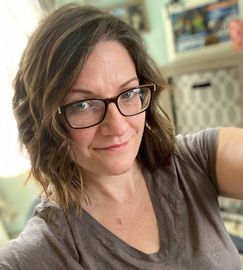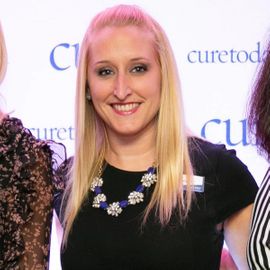- About Us
- Advertise / Support
- Editorial Board
- Contact Us
- CancerNetwork.com
- TargetedOnc.com
- OncLive.com
- OncNursingNews.com
- Terms & Conditions
- Privacy
- Do Not Sell My Information
- Washington My Health My Data
© 2025 MJH Life Sciences™ and CURE - Oncology & Cancer News for Patients & Caregivers. All rights reserved.
Joining Forces Against Hereditary Risk for Breast and Ovarian Cancer


Kristie L. Kahl is vice president of content at MJH Life Sciences, overseeing CURE®, CancerNetwork®, the journal ONCOLOGY, Targeted Oncology, and Urology Times®. She has been with the company since November 2017.
After receiving a breast cancer diagnosis “out of the blue” in 1996, Sue Friedman would later come to find out she also has a BRCA2 genetic mutation – a discovery that would lead to the creation of an organization for individuals in a similar situation.
After receiving a breast cancer diagnosis “out of the blue” in 1996, Sue Friedman would later come to find out she also has a BRCA2 genetic mutation — a discovery that would lead to the creation of an organization for individuals in a similar situation.
Now a 20-year breast cancer survivor, Friedman founded FORCE in 1999 to fill the information void for individuals and families with hereditary cancer and to help them advocate for themselves.
Recently at the 11th Annual Joining FORCEs Against Hereditary Cancer Conference held in San Diego from Oct. 19-20, CURE sat down with Friedman, who discussed the conference and what’s next for the organization.
This is the 11th annual conference. That’s quite an accomplishment. How does that make you feel? And what do you hope to accomplish in year 12?
This is our largest conference — with the largest number of registrations we’ve ever had – and it’s also our first time on the west coast, so it’s exciting. It really speaks to the growing need for a conference like ours, and the growing need for our community.
For our 12th conference, it would be great if we could grow attendance even more and have more men participating. This was also our first year offering the program in Spanish, so it would also be great to be able to grow and expand that as well.
Why is BRCA testing crucial for women and men?
Now it’s not just BRCA, but it’s panel testing too. We’re starting to get members of our community with some of the newer gene mutations like PALB2 and ATM and PTEN, and those people are coming to us because they need support and information as well, and the decisions they have to make are similar.
There’s also really been a disparity in the testing of men. Part of that is the fact that there’s been a large focus on research for women with mutations because their risks are so high. But we know that these gene mutations are associated with male breast cancer, prostate cancer, as well as pancreatic cancer in men and women. There really is a growing need to engage men and raise awareness among men that testing is important.
One of the issues that we’re facing is access to care. Some of it is a knowledge and awareness barrier, where doctors, healthcare providers and the general population don’t recognize that men can carry a mutation. Reimbursement for genetic testing in men has not been as easy as it has for women. But some of it is about overcoming those barriers.
How can parents have these conversations with their children?
At this conference, we bring in world experts, but we also bring in volunteers from our community: families that have lived through this, that have had to communicate with other family members about having a gene mutation, parents who have told their children.
Now that we’re in our 11th year and we’ve become a mature organization with a mature conference, we’re seeing families bringing their children here to have that conversation, where they already know that it runs in the family, but to help educate and pass on to the next generation that important information that helped them.
We have resources through FORCE, including our peer navigation program and our website, and even some of our brochures that speak specifically to how to start that conversation, that offer tips on how to share their family history and genetic testing information.
What is the key takeaway that individuals should be taking away from this conference?
One of our key takeaways from our conference — and we really focused on this in our opening session and will throughout the conference – is that you’re not alone. We have built this whole community of survivors, previvors, healthcare providers, and caregivers, all learning from one another. We want anybody in our community, no matter where they are on the continuum, to know that we have resources for them and that they are not alone.
Is there anything else that you would like to add?
It’s important for us to make sure that people understand that this conference is just a subset of what we do. We do so much on a daily basis through our staff, through our volunteer programs, through our awareness and education programs that all reach the hundreds of thousands of families in the United States affected by hereditary cancer. We encourage people to visit facingourrisk.org and sign up for our mailing list to get updates and get involved.
Related Content:



